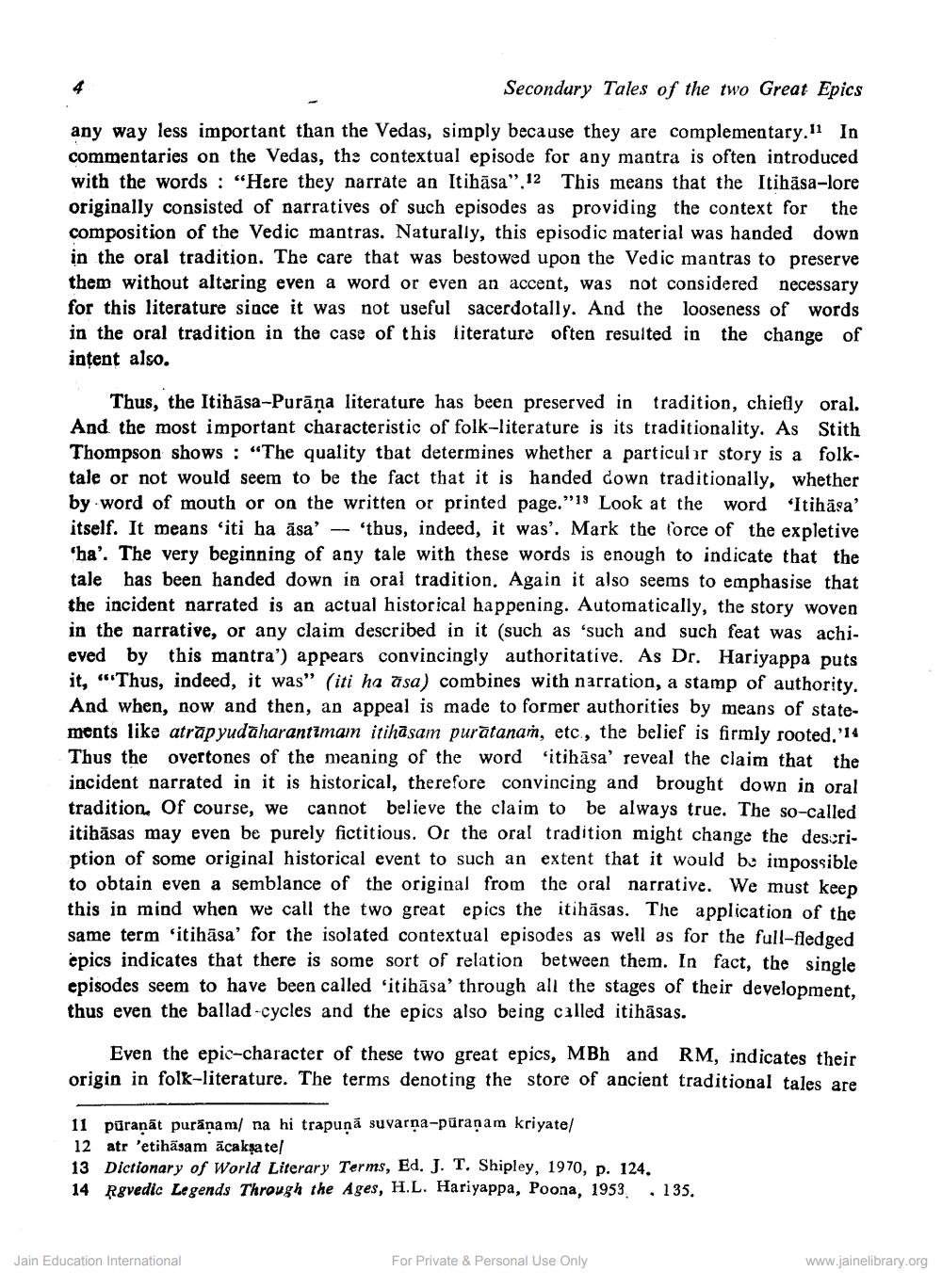________________
Secondary Tales of the two Great Epics any way less important than the Vedas, simply because they are complementary." In commentaries on the Vedas, the contextual episode for any mantra is often introduced with the words: "Here they narrate an Itihasa".12 This means that the Itihasa-lore originally consisted of narratives of such episodes as providing the context for composition of the Vedic mantras. Naturally, this episodic material was handed down in the oral tradition. The care that was bestowed upon the Vedic mantras to preserve them without altering even a word or even an accent, was not considered necessary for this literature since it was not useful sacerdotally. And the looseness of words in the oral tradition in the case of this literature often resulted in the change of intent also.
Thus, the Itihasa-Purāņa literature has been preserved in tradition, chiefly oral. And the most important characteristic of folk-literature is its traditionality. As Stith Thompson shows: "The quality that determines whether a particular story is a folktale or not would seem to be the fact that it is handed down traditionally, whether by word of mouth or on the written or printed page." Look at the word 'Itihasa' itself. It means 'iti ha asa' 'thus, indeed, it was'. Mark the force of the expletive 'ha'. The very beginning of any tale with these words is enough to indicate that the tale has been handed down in oral tradition, Again it also seems to emphasise that the incident narrated is an actual historical happening. Automatically, the story woven. in the narrative, or any claim described in it (such as 'such and such feat was achieved by this mantra') appears convincingly authoritative. As Dr. Hariyappa puts it, "Thus, indeed, it was" (iti ha asa) combines with narration, a stamp of authority. And when, now and then, an appeal is made to former authorities by means of statements like atrapyudāharantimam itihasam puratanam, etc., the belief is firmly rooted.'14 Thus the overtones of the meaning of the word 'itihasa' reveal the claim that incident narrated in it is historical, therefore convincing and brought down in oral tradition. Of course, we cannot believe the claim to be always true. The so-called itibāsas may even be purely fictitious. Or the oral tradition might change the description of some original historical event to such an extent that it would be impossible to obtain even a semblance of the original from the oral narrative. We must keep this in mind when we call the two great epics the itihasas. The application of the same term itihasa' for the isolated contextual episodes as well as for the full-fledged epics indicates that there is some sort of relation between them. In fact, the single episodes seem to have been called 'itihasa' through all the stages of their development, thus even the ballad-cycles and the epics also being called itihāsas.
Even the epic-character of these two great epics, MBh and RM, indicates their origin in folk-literature. The terms denoting the store of ancient traditional tales are
11 paranat purinam/ na hi trapuna suvarṇa-püraṇam kriyate/
12 atr 'etihasam acakṣate/
13 Dictionary of World Literary Terms, Ed. J. T. Shipley, 1970, p. 124. 14 Rgvedic Legends Through the Ages, H.L. Hariyappa, Poona, 1959
Jain Education International
For Private & Personal Use Only
135.
www.jainelibrary.org




